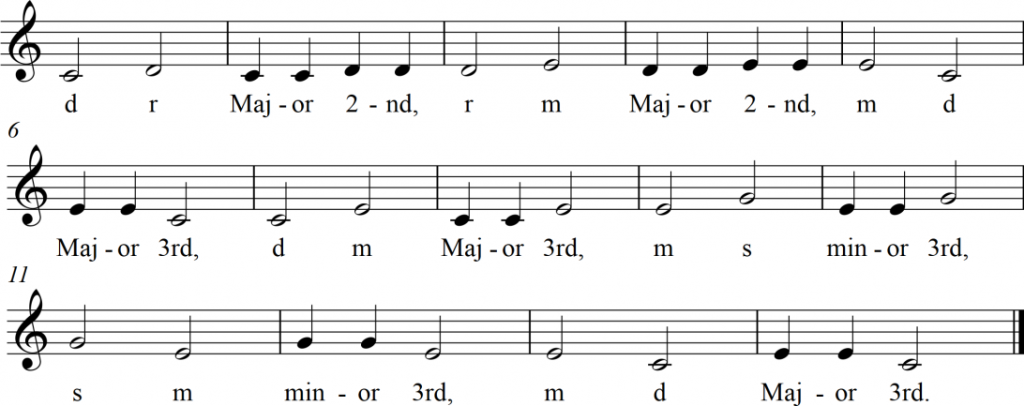A Few of my Favourite ….. Interval Activities
Comments Off on A Few of my Favourite ….. Interval Activities
A Few of my Favourite ….. Interval Activities
I was recently struck by how many activities we need to keep our students interested and engaged in our music classes.
If we teach something to our 4 year old students (e.g. “beat”) then we need to have sufficient practice activities to challenge our students enough to keep them practicing “beat” for as long as we continue to teach them – in some cases up to Year 12.
So I’ve decided to share some of my favourite activities (suitable for all levels – just adjust the content to suit) which I hope you will find useful.
This blogpost deals with Interval activities. Keep a look out for my next “A Few of my Favourite…..”
Bingo
You as the teachers – hands out laminated bingo cards (like the ones on the image above) with 9 interval names on it. (If fewer interval names are known then intervals can be repeated on the card). You also hand out a whiteboard marker or 9 tokens to each student.
You sing an interval (on a neutral syllable) from the master sheet (which is then crossed off).
Students sing it back (on a neutral syllable).
Then, students mark (with whiteboard marker or playing token) the interval off if on their sheet.
The class sings the interval again in solfa as you or a student writes on the board to check.
To win BINGO, your student must have any three across, down, or diagonally or for the longer version – all the rhythms – like regular BINGO.
Flashcard Knockout (Musical Chairs)
Requirements: Interval flashcards – one per student. There can be more than one card with the same interval name. Click on the image below for free printable interval flashcards.
You, as the teachers, puts one flashcard per number of students with the names of known intervals on the floor. 
Students walk around as you play some music (I use this chance to play the work we are studying in the “Listening” part of the course).
When the music stops students stand on a flashcard.
You then sing or play an interval from one of the flashcards. If a student is standing on the flashcard with the interval sung or played they sit down. If they are correct they stand to continue the game. If they are wrong then they are “out”.
Interval knockout.
Your students stand with their eyes closed.
You then sing a known interval on a neutral syllable.
For example, if you sing a Major 2nd, students would hold up two fingers. They would hold three fingers pointing down for a minor 3rd and three fingers pointing up for a Major 3rd and so on.
To correct, the class sings the interval on the neutral syllable and then labels it i.e. “Maj-or 3rd”.
Your students who show the correct interval remain standing, those with the incorrect interval sit down.
Interval Lines
Read this interval line from the board by beginning on the given solfa note then singing the note suggested by interval quality and arrow.
If sung correctly an interval line will end on the starting note.
Here is the above interval line written out on the staff:
Asking students to create their own interval lines is a great way to ensure they understand the intervals that can be found in a particular scale.
How do you practice intervals with your classes?




Comments are closed